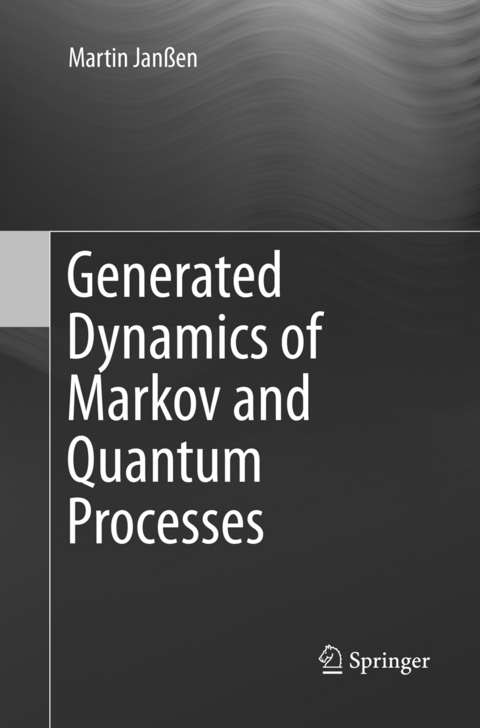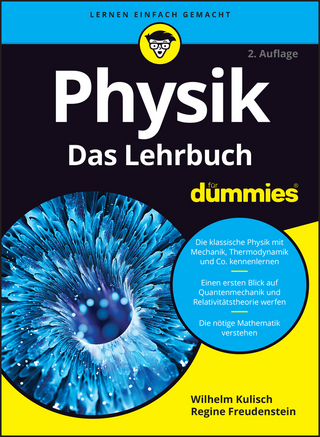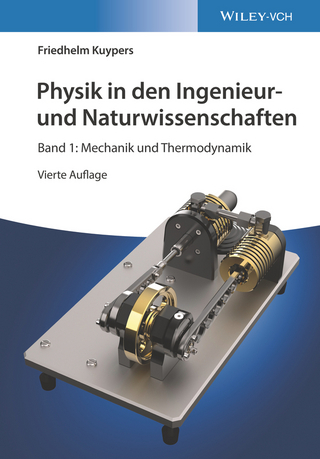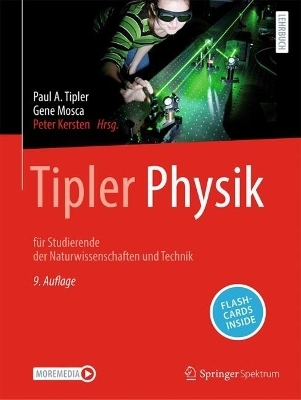
Generated Dynamics of Markov and Quantum Processes
Springer Berlin (Verlag)
978-3-662-57028-9 (ISBN)
This book presents Markov and quantum processes as two sides of a coin called generated stochastic processes. It deals with quantum processes as reversible stochastic processes generated by one-step unitary operators, while Markov processes are irreversible stochastic processes generated by one-step stochastic operators. The characteristic feature of quantum processes are oscillations, interference, lots of stationary states in bounded systems and possible asymptotic stationary scattering states in open systems, while the characteristic feature of Markov processes are relaxations to a single stationary state. Quantum processes apply to systems where all variables, that control reversibility, are taken as relevant variables, while Markov processes emerge when some of those variables cannot be followed and are thus irrelevant for the dynamic description. Their absence renders the dynamic irreversible.
A further aim is to demonstrate that almost any subdiscipline of theoretical physics can conceptually be put into the context of generated stochastic processes. Classical mechanics and classical field theory are deterministic processes which emerge when fluctuations in relevant variables are negligible. Quantum mechanics and quantum field theory consider genuine quantum processes. Equilibrium and non-equilibrium statistics apply to the regime where relaxing Markov processes emerge from quantum processes by omission of a large number of uncontrollable variables. Systems with many variables often self-organize in such a way that only a few slow variables can serve as relevant variables. Symmetries and topological classes are essential in identifying such relevant variables.
The third aim of this book is to provide conceptually general methods of solutions which can serve as starting points to find relevant variables as to apply best-practice approximation methods. Such methods are available through generating functionals.
The potential reader is a graduate student who has heard already a course in quantum theory and equilibrium statistical physics including the mathematics of spectral analysis (eigenvalues, eigenvectors, Fourier and Laplace transformation). The reader should be open for a unifying look on several topics.Martin Janßen is a private lecturer at the Institute of Theoretical Physics at the University of Cologne and a high school teacher at the Friedrich-Wilhelm-Gymnasium in Cologne. He gained his doctorate in 1990 in Cologne for his work on magneto transport and multifractality in the context of the quantum Hall effect and his venia legendi in 1997, on completion of his post-doctoral thesis on statistics and scaling in mesoscopic electron systems. He held a DFG Postdoctoral Fellowship at Oxford University in 1993 and a Minerva Postdoctoral Fellowship at Haifa University in 1995. He has been a member of academic staff at the University of Cologne from 1992 to 1998 and at Bochum University from 1998 to 2001. After working as an environmental physicist from 2001 to 2011 he became a high school teacher in physics and mathematics. Since 2001 he gives lectures at the University of Cologne on Theoretical Physics with emphasis on dynamics of stochastic processes. He has co-written a book on the integer quantum Hall effect and written a book on fluctuations and localization in mesoscopic electron systems.
Introduction - Dynamics of Relevant Variables- Generated Dynamics.- Formal Solutions.- Special Solutions.- Observables, States, Entropy and Generating Functionals.- Symmetries and Breaking of Symmetries.- Topology.- Selected Applications.
"The present book is recommendable especially to graduate students who are familiar with quantum theory and equilibrium statistical physics including the mathematics of spectral analysis (eigenvalues, eigenvectors, Fourier and Laplace transformations)." (Isamu Dôku, zbMATH 1409.81005, 2019)
“The present book is recommendable especially to graduate students who are familiar with quantum theory and equilibrium statistical physics including the mathematics of spectral analysis (eigenvalues, eigenvectors, Fourier and Laplace transformations).” (Isamu Dôku, zbMATH 1409.81005, 2019)
| Erscheinungsdatum | 05.03.2022 |
|---|---|
| Zusatzinfo | XVII, 226 p. 36 illus., 1 illus. in color. |
| Verlagsort | Berlin |
| Sprache | englisch |
| Maße | 155 x 235 mm |
| Gewicht | 3752 g |
| Themenwelt | Naturwissenschaften ► Physik / Astronomie ► Allgemeines / Lexika |
| Naturwissenschaften ► Physik / Astronomie ► Theoretische Physik | |
| Technik | |
| Wirtschaft ► Betriebswirtschaft / Management | |
| Schlagworte | Best-Practice Approximation Methods • breaking of symmetries • Control Reversibility • Generated Stochastic Processes • Irreversible Stochastic Processes • Markov Processes • One-Step Unitary Operators • Quantitative Finance • Uncontrollable Variables |
| ISBN-10 | 3-662-57028-9 / 3662570289 |
| ISBN-13 | 978-3-662-57028-9 / 9783662570289 |
| Zustand | Neuware |
| Haben Sie eine Frage zum Produkt? |
aus dem Bereich


